 |
|||
|
|
|||
|
||||||||||||||||||||||||||||
|
P R O F I L E |
||||||||||||||||||||||||||||
|
 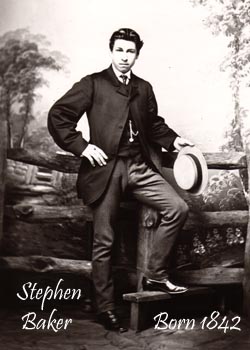 The Bakers - Brickmakers, Publicans and much more
The Bakers - Brickmakers, Publicans and much moreKiln Cottage and Brickyard Piddinghoe Sussex United Kingdom The Bakers - Brickmakers of Piddinghoe
The early 1980s restoration of the conical up-draught brick kiln in the village of Piddinghoe has prompted further research into the Baker family. This paper by this author first appeared in Sussex Industrial History No 12 1982 Jnl. of the Sussex Industrial Archaeology Society.(1) Subsequent research has revealed new facts about the brickyard and the Bakers which are incorporated in this revised version dated January 2019. The Baker family were long established in Piddinghoe before evidence of brick-making become apparent. Parish registers show Bakers in profusion throughout the 17th, 18th and 19th centuries in the village.(2) On the 11th May 1616 the burial of Robert Baker is one of the earliest entries in the registers. In the 19th century Edward Baker I through his two marriages gave rise to three important male lines, William, Stephen I and Edward II. The names are perpetuated father to son. To try and avoid confusion the generations are identified with the suffix I, II and III.
Untangling the entrepreneurial generations can be confusing especially as the various offspring proliferated the numbers and impact of the family at large on the locality. For example Edward Baker I had a sister Mary Baker born in 1777. She appears to have married into the Stanton family marrying the father of W H Stanton. Their son became a well known ships pilot in Deal. His book 'The Journal of a Deal Pilot' published in 1929 confirms the Baker family involvement with maritime matters, particularly smuggling and wrecking. Ships stranded on the Goodwin sands and around Beachy Head were abandoned by the crew and recovered by locals who could secure a share of the cargo as a result. This led to many incidents where the motives were questionable. About 1818 Williams father was imprisoned for smuggling for example. See William H Stanton on the Destiny Index above for further details.
Edward Baker I was christened in Chailey in September 1773, the son of John Baker and Mary. The year 1773 is confirmed by Edward I's grave, which is in Piddinghoe churchyard. The father John Baker rented the manor of Piddinghoe for 21 pounds p.a. from 1783-1794.(4) John Baker is referred to in the Piddinghoe parish registers between 1790 and 1802 when several children were baptised. This all indicates an 18th century presence of the family in Piddinghoe. In 1800 Edward I married Lucy Tuppen in nearby Iford and they had three children while living in Southover: William I in February 1801, Jane in November 1801 and John in 1804. By 1811 it is known that Edward Baker I was well established in Piddinghoe when he is listed as an overseer of the poor.(5) From 1814 to 1827 he is also listed as a churchwarden. A significant event for Edward Baker I about this time was the death of his first wife in 1810 at the age of 35 in Southover and his marriage on 12 April 1812 to Winifred Banks of Southover. She was born in Framfield in 1780. In the registers he is described as a widower.(6) Between the years 1814-1822, Edward Baker I and Winifred had four children: Mary Ann 1814, Sarah 1817, Edward II 1819 and Stephen I 1822. All were baptised in Piddinghoe. By the 1820s local directories were describing Edward Baker I as a brick-maker and potter with the first reference to a brickyard appearing in the Land Tax returns of 1817. (3) In the 1819 baptism entry in the parish register, Edward I is described as a builder, this indicates that activities of this local industry were already diverse. Piggot's directory of 1839 describes Edward I as a brick-maker and brown potter and scrutiny of the 1843 Tithe Maps shows clearly the premises involved in the brick-making which by now was flourishing. Edward Baker I is listed as owner and occupier of a brickworks, shed, meadow, garden and shaw chalk pit bank at the northern edge of the village. In addition he is renting from the Earl of Chichester a shed and ground on the river bank near the church. The positioning of the premises adjacent to the river no doubt facilitated water-borne transport both from the clay pits to the south of the village and for bricks which were dispatched upstream to Lewes and downstream to Newhaven. Although brick-making was the principal activity for the Baker family it was not their only commercial venture. By 1841 Edward I is classified as a publican living in Rodmell with his family. (7) Edward II the son and now 22 years old was obviously taking an interest in the business and is described as a potter in 1841. Having retired from the business Edward I died in 1845 and is buried in Piddinghoe churchyard. We can conclude that William I, the son of Edward I's first marriage was also participant in the brickmaking business. William Baker I, an enumerator in the 1841 census died in 1851. His wife Elizabeth is listed in the census of that year as the widow of William, brick-maker. William and Elizabeth had two children in Piddinghoe, Sarah Ann in 1831 and William II in 1836 and at that time William I is identified as a shopkeeper. His precise relationship to Edward Baker II is half brother. It is known that following William I's death in 1851, the son William II was an apprentice blacksmith living at the Abergavenny Arms in Rodmell with his uncle Stephen Baker I, son of Edward Baker I. Stephen I, the younger son of Edward I, was married to Jane, sister of Ann Kiljoy of Framfield. They had a son Stephen II in 1842 and appear to have been the principals looking after the family interest in the Abergavenny Arms at Rodmell.
It is interesting to note that in 1835, Mary Ann the sister of Stephen Baker and Edward II, married John Corner of South Heighton. In the 1851 census (6) Ann Corner, also of South Heighton, is listed as living in the village. She is identified as mother of Elizabeth Baker who was the wife of William Baker I, brick-maker who died in that year. The implications of this link indicate that families were often genealogically united in several ways. Tragedy was to befall this line of William Bakers unfortunately with the death of the only son William II in 1853 at the age of 17 of a strangulated hernia. Monumental inscriptions to both William senior and junior can be seen in Piddinghoe churchyard. They are adjacent to those of Edward Baker I dying in 1845 and Winifred dying in 1858. Also in the churchyard is the monumental inscription of Elizabeth, wife of William senior - she dying in 1871. Edward II assumed full responsibility for the brick-making activities following his father's death in 1845. In June 1851 the Sussex Agricultural Express advertised the business for sale. It is described as "a very desirable brickyard with a small cottage and a most valuable brook containing about 1 1/2 acres and affording an excellent supply of earth for making white bricks". Three kilns, sheds etc are also mentioned. Edward II did not in fact succeed in disposing of the business but instead diversified into whiting and burnt lime. The site is unusual in Sussex in having a supply of white firing clay and a supply of chalk. Kelly's directory of Sussex for 1857 describes Edward Baker II as a white and red brick, tile, drain pipe and whiting manufacturer and coal merchant. This indicates the extent of diversification doubtless as the competition brought on by improved transport placed pressure on the business. 1845 the same year that Edward Baker I died also saw Edward II the son marrying Mary Ann Souter Osborn. She was the daughter of William Osborn, a yeoman farmer from nearby Telscombe. (1) The author is a direct descendant of this William Osborn. Edward II and Mary Ann were married on 11 June 1845 in Telscombe church and subsequently had five children, Winifred 1847, Elizabeth 1848, Sarah Jane 1850, Mary Ann 1852 and a son, the third generation of Edward Bakers, Edward III was born in 1854. Unfortunately Mary Ann died in 1855 and Edward II married Ann Parsons, a local widow the following year. By 1861 Edward II was employing 6 men and by this time the workings south of the village were equipped with a tramway to assist the extraction of clay. A new owner of the brickyard appears on the scene in 1867. From 1867 until 1892 William Souter Osborn is recorded for the Land Tax as proprietor. William is the elder brother of Mary Ann who died in 1855. He is also the brother of John Souter Osborn who emigrated to Australia in 1855. William died in 1885 following insolvency in 1883 but the Land Tax records continue after his death. William by 1867 was a very prosperous farmer in East Dean at The Gore Farm. His taking over of the brickyard appears to have more or less coincided with his vacation of Warren Farm at Telscombe and moving to East Dean. The fact that Piddinghoe was the centre for the
manufacture of chalk whiting provided an opportunity to create a joke about
Piddinghoe folk. They are reputed to "hang fields out to dry" this being a
reference to the spreading of chalk to drain on sloping shelves. Another Baker appears on the scene in the second half of
the nineteenth century. This is Robert Baker a partner in the firm of Stephen Baker also had an account with the wheelwrights for the Marquis of Abergavenny public house. This was situated immediately opposite the wheelwrights in Rodmell and entries include a whole range of building and decorating items, nails, paint, barge boards, cement, etc. Throughout the 1880s the directories of Piddinghoe continue to list the business of Edward Baker II as brick and whiting manufacturer. In 1888 Edward Baker II the third generation has a son by his wife Lucy. Walter George was baptised in Piddinghoe on March 21st but this son was not destined to have a long active involvement with the business. After the turn of the century the brick manufacturing was dropped from the directory listings. By 1913 no reference to the Baker business was given in local directories following the last firing of the kiln in 1912. A Mrs Baker was headmistress of Piddinghoe village school about 1905 and a picture exists of the school assembled at the time. With the closing of the business the Bakers finally left Piddinghoe in 1915, although the Bakers house still stands mainly unaltered at right angles and adjacent to the road north of the village. Visiting Piddinghoe today there are many traces of this former industry still visible. One of the specialities of the kiln was decorative pillars for a variety of uses on buildings and various items can be found in gardens on the village. The wharf adjacent to the brickworks can be identifies and a watercolour exists of the brickworks site done in the 20th century. The chalk cliff can still be seen opposite the brickworks and the clay pit is now a boat marina. The most outstanding reminder of the Bakers is without doubt the sole remaining kiln recently restored by Ted O'Shea and a team from the Sussex Industrial Archaeology Society, a fitting memorial to 100 years of brick making in Piddinghoe. References 1. Osborne, B. E. The Osbornes farmers from Telscombe and the Bakers brick-makers from Piddinghoe. SIAS Newsletter No. 29 November 1980. Also see the earlier version of this paper in Sussex Industrial History No 12 1982 Jnl. of the Sussex Industrial Archaeology Society. 2. Piddinghoe parish registers - CRO and CFI, Society of Geneologists. 3. Manwaring Baines, J. Sussex Pottery. Fisher Publications, Brighton (1980) also see Haselfoot, A.J. The Batsford Guide to IA of S.E. England. B.T. Batsford Ltd., London. 4. Land Tax Assessments CRO 5. Piddinghoe Poor Book 1811 CRO 6. Piddinghoe 1851 census CRO 7. Rodmell census 1841 CRO 8 Piddinghoe 1861 census CRO 9. Simpson, J. The Folk Lore of Sussex. p.154. 10. Beswick, M. From Ox Cart to Steam Engine. Sussex Industrial History 9. In addition I am grateful to the following:- Mrs M. Beswick, Frank Dean, Mrs. Woolgar, LK.C. Leslie, all who have assisted in the preparation of this document. The author is continuing research on the Bakers of Piddinghoe and the Osbornes - Sussex farmers, and would be grateful for details of any further material that may come to light.
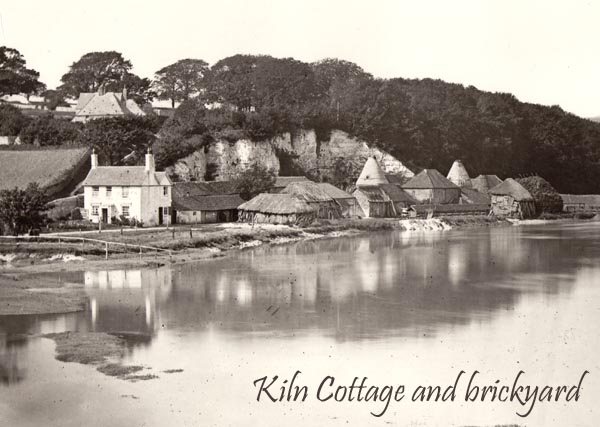 Website: Click Here ADDITIONAL INFORMATION Click on Website above to discover the lifestory of Mary Ann BakerDESTINY CATEGORY 19th CENTURY first half, 19th CENTURY second half, PAST, PLACES, Smuggling LANDSCAPE Country town/village REGION England - Southern |
||||||||||||||||||||||||||||



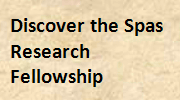

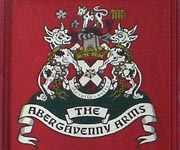
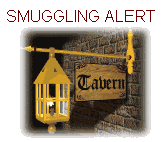 Such
accusations of stupidity were typical of rural wit and appear to have been
particularly directed at Piddinghoe folk. Another example of rural wit about Piddinghoe folk was "they fish for the moon, they go digging for moonshine, for daylight, or for smoke". This referred to the smuggling trade where kegs of spirits (moonshine) or tobacco (smoke) might be buried or sunk in the river to be retrieved later. Daylight probably referred to tallow, another smuggled item. A rhyme from the Napoleonic War period of the early 19th century emphasises the Piddinghoe wish to stay out of the conflict between the English and French, instead concentrating on the profitable trade of smuggling: Englishmen fight, Frenchmen too; We do n't, we live in Piddenhoo".(9) Smuggling was a trade that percolated all rural life and the Hills were likely involved as were also likely the Osborns.
Such
accusations of stupidity were typical of rural wit and appear to have been
particularly directed at Piddinghoe folk. Another example of rural wit about Piddinghoe folk was "they fish for the moon, they go digging for moonshine, for daylight, or for smoke". This referred to the smuggling trade where kegs of spirits (moonshine) or tobacco (smoke) might be buried or sunk in the river to be retrieved later. Daylight probably referred to tallow, another smuggled item. A rhyme from the Napoleonic War period of the early 19th century emphasises the Piddinghoe wish to stay out of the conflict between the English and French, instead concentrating on the profitable trade of smuggling: Englishmen fight, Frenchmen too; We do n't, we live in Piddenhoo".(9) Smuggling was a trade that percolated all rural life and the Hills were likely involved as were also likely the Osborns.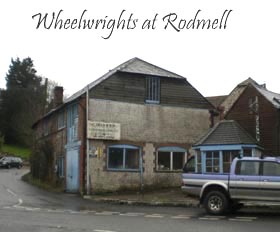 wheelwrights at Rodmell, Jeffery and Baker. (10) The genealogical relationship
between Robert and Edward II has still to be ascertained but it is unlikely that
they were closely related. The ledgers for the wheelwrights for the years 1878 - 1882 still survive and scrutiny of the Edward Baker account for the brickworks
reveals many interesting items. Goods supplied include tile moulds, loading
cart, brickboard, body for whiting cart, etc. Amusing entries include two pounds and twelve shillings for a new mahogany W.C. seat and riser in 1881 and a sad entry in 1878 for a
full trimmed coffin for deceased Ann Baker aged 60 years. This was for Ann,
Edward II's second wife who died in May of that year.
wheelwrights at Rodmell, Jeffery and Baker. (10) The genealogical relationship
between Robert and Edward II has still to be ascertained but it is unlikely that
they were closely related. The ledgers for the wheelwrights for the years 1878 - 1882 still survive and scrutiny of the Edward Baker account for the brickworks
reveals many interesting items. Goods supplied include tile moulds, loading
cart, brickboard, body for whiting cart, etc. Amusing entries include two pounds and twelve shillings for a new mahogany W.C. seat and riser in 1881 and a sad entry in 1878 for a
full trimmed coffin for deceased Ann Baker aged 60 years. This was for Ann,
Edward II's second wife who died in May of that year.